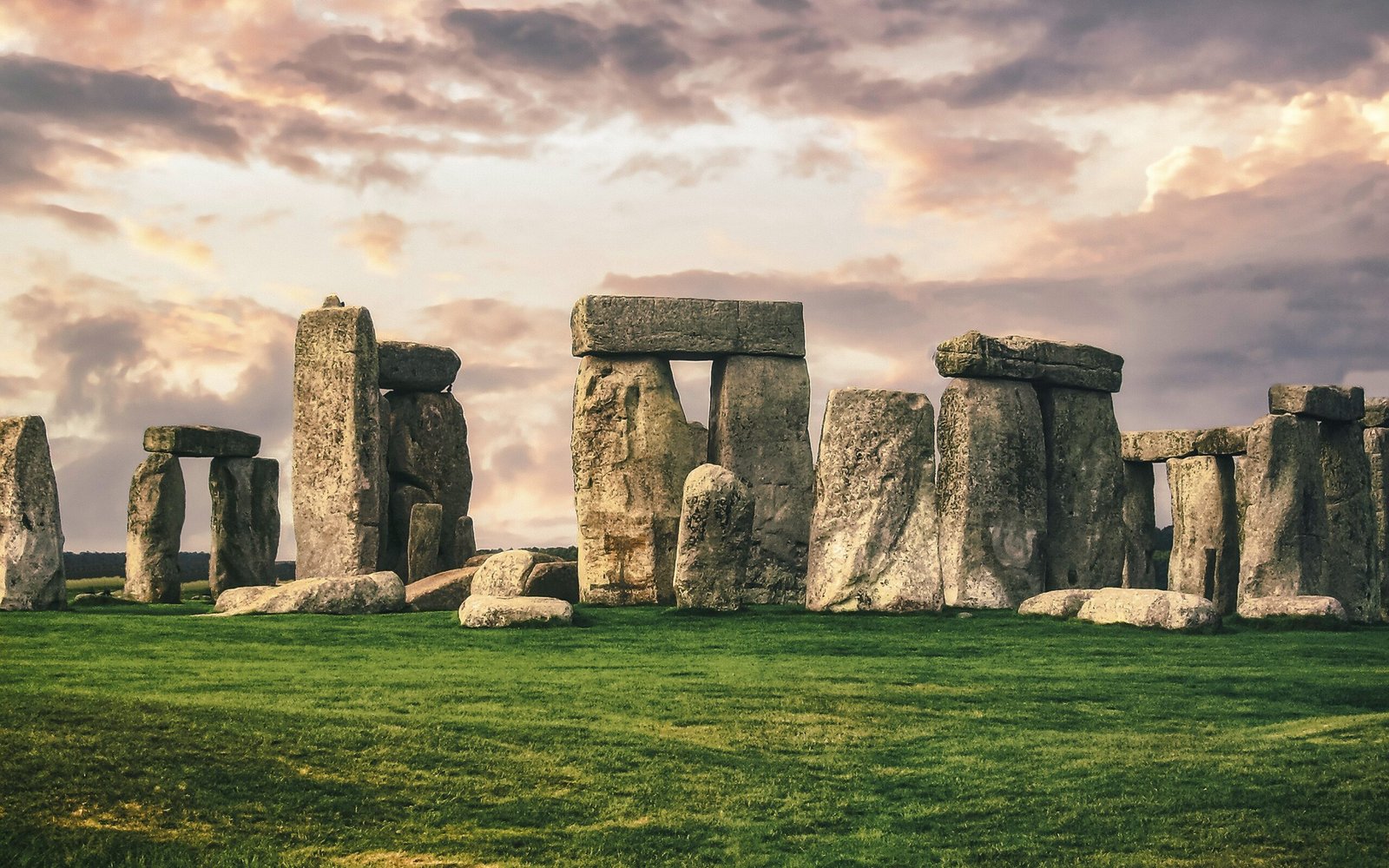
Photo by <a href="https://unsplash.com/@kmitchhodge" rel="nofollow">K. Mitch Hodge</a> on <a href="https://unsplash.com/?utm_source=hostinger&utm_medium=referral" rel="nofollow">Unsplash</a>
The Mystery of Stonehenge
Stonehenge, one of the wonders of the world, is a prehistoric monument located near the city of Salisbury, England. This iconic structure, built between roughly 5,000 and 4,000 years ago, continues to captivate the imagination of people around the globe. It is not just a solitary monument, but part of a larger sacred landscape that holds many secrets waiting to be unraveled.
A Testament to Human Ingenuity
Stonehenge stands as a testament to the ingenuity and engineering prowess of our ancestors. The massive stones, some weighing up to 25 tons, were transported over great distances and meticulously arranged to form the awe-inspiring structure we see today. The precision with which these stones were placed is a marvel in itself, considering the limited tools and resources available during that time.
While the exact purpose of Stonehenge remains a subject of debate among archaeologists and historians, it is widely believed to have served as a ceremonial and religious site. The alignment of the stones with the movements of the sun and moon suggests an astronomical significance, possibly linked to ancient rituals and beliefs.
A Window into the Past
Exploring Stonehenge is like stepping into a time machine and immersing oneself in the mysteries of the past. The site offers visitors a unique opportunity to connect with our ancient ancestors and gain insights into their way of life. As you walk among the towering stones, you can’t help but wonder about the people who built this remarkable monument and the purpose it served in their lives.
Archaeological excavations have revealed fascinating artifacts and human remains in and around Stonehenge, shedding light on the customs, rituals, and social structures of the people who once inhabited this area. These discoveries have sparked further questions and fueled ongoing research, keeping the allure of Stonehenge alive.
A World Heritage Site
In recognition of its cultural and historical significance, Stonehenge was designated as a UNESCO World Heritage Site in 1986. This prestigious status ensures its preservation for future generations and acknowledges its universal value as a symbol of human achievement and cultural heritage.
Visitors to Stonehenge can explore the site through guided tours or enjoy the freedom to wander around at their own pace. The visitor center provides valuable insights into the history and significance of Stonehenge, offering a comprehensive experience for those seeking to delve deeper into the mysteries surrounding this ancient monument.
Preserving the Past
Preserving Stonehenge and its surrounding landscape is of utmost importance to ensure that future generations can continue to marvel at its splendor. Ongoing conservation efforts and research initiatives aim to safeguard this invaluable piece of our collective history.
As visitors, we have a responsibility to treat Stonehenge with respect and care. It is essential to follow the guidelines provided by the authorities and avoid any actions that may cause harm to the monument or its surroundings. By doing so, we can contribute to the preservation of this ancient wonder and allow it to inspire and intrigue generations to come.
A Symbol of Wonder and Mystery
Stonehenge remains an enduring symbol of wonder and mystery, captivating the hearts and minds of people from all walks of life. Its enigmatic presence continues to spark curiosity and fuel our desire to unravel the secrets of the past. Whether you are a history enthusiast, a spiritual seeker, or simply someone in awe of human achievements, a visit to Stonehenge is an experience that will leave an indelible mark on your soul.
So, let us embark on a journey through time and immerse ourselves in the magic of Stonehenge, where the ancient whispers of the past still echo through the stones.








